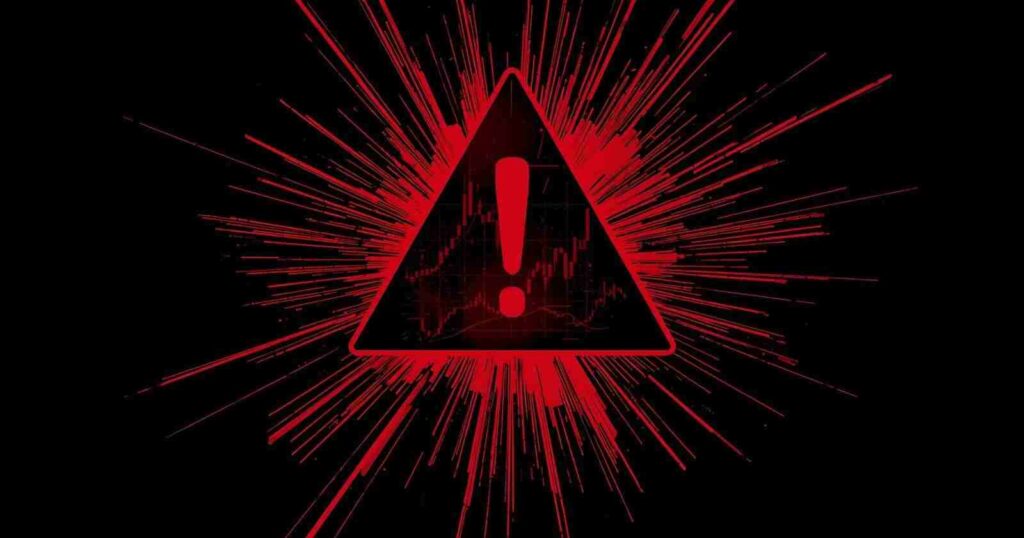Decoding the Warning Signs of Narrowing Stock Leadership
Decoding the Warning Signs of Narrowing Stock LeadershiP: For US investors, the last few years have felt like a constant party on Wall Street, with the S&P 500 and Nasdaq hitting one new high after another. But look closely beneath the hood of these headline numbers, and you’ll find an increasing number of analysts pointing to a significant warning sign: narrowing stock market leadership.
This isn’t just technical jargon; it’s a critical signal that the market’s seemingly unstoppable momentum is actually fragile, relying on the performance of just a handful of megacap giants—often dubbed the “Magnificent Seven.”
Here is a detailed guide for US investors on what “narrowing leadership” means, why it matters for your portfolio, and the key indicators to watch
What Exactly is Narrowing Market Leadership?
Narrowing leadership means that a decreasing number of stocks are responsible for driving the overall gains in the major indexes.
Imagine the S&P 500 as a marathon race. In a healthy bull market, most of the 500 runners are making good progress, crossing the finish line together. In a market with narrowing leadership, only a few elite sprinters (like Apple, Microsoft, and Nvidia) are racing ahead, while the majority of the runners are slowing down or even dropping out.
Currently, the Magnificent Seven tech stocks—a mere seven companies—have at times accounted for over 70% of the S&P 500’s total return in a given year, and their collective weight in the index has swelled to around a third of the total value. When such a small group carries such a large weight, the entire market becomes incredibly vulnerable to any stumble they might take.

Image Source: Canva AI
Three Crucial Warning Signs to Watch
Smart investors use specific metrics to measure market breadth and detect this concentration risk.
1. Weakness in Market Breadth Indicators
Market breadth measures the participation of individual stocks in a move. When the S&P 500 is going up but the internals are weak, it’s a major red flag.
- The Advance/Decline (A/D) Line Divergence: This indicator tracks the daily difference between the number of advancing stocks and declining stocks. If the S&P 500 index hits a new all-time high, but the A/D line fails to do the same (a divergence), it means more individual stocks are going down than up, suggesting the rally is built on an unstable foundation.
- Stocks Above Key Moving Averages: A healthy market should have a high percentage of its components trading above key technical support levels, such as the 50-day or 200-day simple moving averages (SMAs). When the index is high but less than 50% of its component stocks are above their 200-day SMA, it confirms that the market’s strength is dangerously limited to a few names.

Image Source: Gemini
2. The Russell 2000 Underperformance
The Russell 2000 Index tracks 2,000 small-cap US companies. These smaller stocks are generally more sensitive to the domestic economy and interest rates than the global, cash-rich tech giants.
- The Divergence: When the S&P 500 surges to new highs, but the Russell 2000 lags significantly, it signals a lack of conviction in the broader US economy. Investors are only willing to buy the “sure thing” (Big Tech) and are actively avoiding the smaller, more economically sensitive companies—a classic sign of caution and potential US economic slowdown fears.
3. The Lack of Sector Rotation
In a sustainable bull market, leadership rotates. When one sector (like Tech) takes a breather, another (like Industrials, Energy, or Financials) steps up to carry the torch.
- The Problem: When the Magnificent Seven pause, and no other major sector steps up to fill the vacuum, the entire market stalls or pulls back. This lack of rotation suggests that the entire market, outside of the dominant few, lacks the fundamental earnings growth or investor interest required to sustain the rally. This is the essence of the “running out of time” narrative for a year-end rally.
Go to Homepage
Investor Action Plan: Navigating a Narrowing Market
A fragile, narrow market does not guarantee an immediate stock market correction or crash, but it demands caution and a focus on resilience.
- Prioritize Diversification: Ensure your portfolio is not overly reliant on the Magnificent Seven. If your standard S&P 500 index fund is 30% weighted in these names, consider actively balancing that with exposure to non-tech sectors like Value Stocks (e.g., healthcare, utilities, consumer staples).
- Focus on Fundamentals Over Hype: In a concentrated market, the hype surrounding the leading stocks can push valuations to extremes. Focus on companies with strong free cash flow, healthy balance sheets, and reasonable price-to-earnings (P/E) ratios, especially in the overlooked, non-tech sectors.
- Watch the Fed and Rates: Narrow leadership is particularly sensitive to rising interest rates, as higher borrowing costs punish the valuation of high-growth companies whose profits are expected far in the future. Closely monitor the Federal Reserve’s interest rate outlook.
The market has proven resilient, climbing a “wall of worry” many times before. However, the current high degree of concentration acts as a structural vulnerability. By tracking these clear warning signs of narrowing leadership, US investors can shift from relying on market momentum to building a portfolio fortified by broad-based strength.
